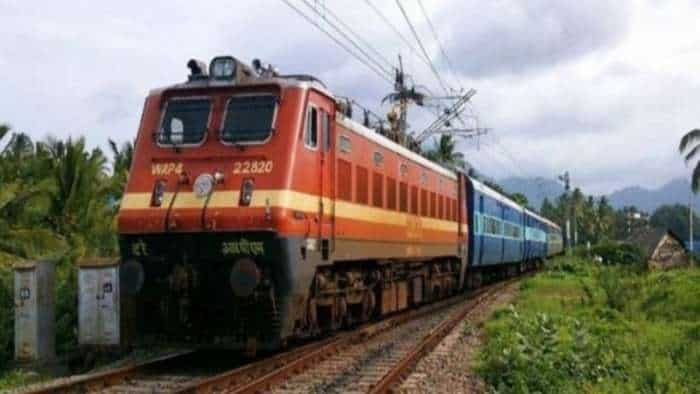EXCLUSIVE - Branch managers will have limited powers to approve loans sourced by them: Punjab and Sind Bank CEO Swarup Kumar Saha

Punjab & Sind Bank will be focusing more on non-corporate loan books and introduce more schemes for individual salaried accounts, the state-run lender’s MD & CEO Swarup Kumar Saha told Zee Business in an exclusive interview.
Q: The bank has performed comparatively well this quarter than the last quarter. But what all areas still need to be addressed?
A: The area of improvement includes our gross nonperforming assets (NPA), although it has come down to 9.67, it is still the highest among the banks. Our CASA amount has shown a growth of 13 per cent but the ratio is still the lowest among the public sector banks, we need to work on that. We also need to work on the cost-to-income ratio, which had gone up significantly in Q1. We have brought it down to 65 per cent. These are the three ratios that we feel are very important for the bank going forward. Gross NPA has significantly come down. We will focus broadly on the recovery up gradation, we have some big ticket regulations in place that will happen in Q3 and Q4.
On the small value accounts, we have also brought in very attractive schemes called Mukti schemes that are non-discretionary and non-discriminatory. These will also give a healthy recovery of small-value accounts (up to 1 crore). My recovery up gradation guidance for the entire year would be around 2000 crores surplus that is on the NPA cycle.
We have brought out new schemes on the deposit fronts, fixed deposit fronts with attractive rates of interest. We are also pursuing strongly the salary accounts. Recently, we have opened several salary accounts of municipal employees in various cities. For example, in Chandigarh, we opened salary accounts for around ten thousand employees. Another 14 thousand accounts are being opened at Nagar Nigam, Lucknow. Further, the opening of more such accounts will help me to grow CASA more efficiently. We intend to bring the current figure of 33.36 to around 35 per cent by March end.
Q: With the credit growth comes the risk of defaults as well. Especially after Covid, we saw a large number of defaults. How do you plan to have the loan disbursals and loan books?
A: While giving advances there will always be a risk component of anything we do and at any time we do. Economic upswings and downswings come in cycles and impact the banking system first. We had the Covid situation, where the economy went into some slackness. But now we are finding a lot of credit demand. Collection efficiency will be a very important factor.
 In terms of loans, we primarily want to go in the RAM (Retail, Agri, MSME segment) sector and keep a lesser growth in the corporate segment. We intend to keep the corporate segment growth at 7-8 per cent and intend to make RAM segment growth at around 20-22 per cent and improve the collection efficiency.
In terms of loans, we primarily want to go in the RAM (Retail, Agri, MSME segment) sector and keep a lesser growth in the corporate segment. We intend to keep the corporate segment growth at 7-8 per cent and intend to make RAM segment growth at around 20-22 per cent and improve the collection efficiency.
Catering to salaried personnel is a more prudent practice than going to a walking customer. If I can bring in those salary accounts more and more and imbibe more underwriting skills; we have better sourcing and sanctioning of loans. That means the branch managers will have limited powers to do loans that are sourced by them, that is the loans that will be under their discretionary power. Beyond 10 lakhs, which is our cut offs, most of the loans will go to a structure. We have created a structure, where the due diligence and underwriting skills are much more. Many more skilled people are placed in those back offices.
If we can improve unwriting skills, mismanagement, risk appetite, and due diligence in various ways, we can address the issue.
Q: Why do you think corporate is relying less on bank loans? Would the bank be able to cater to the profit margin with lesser corporate loan disbursals?
A. Today the working capital requirement has been raised. On the front of corporate books, it is a very competitive market. All the corporate who are approaching banks is also asking for a very competitive rate of interest. In a rising interest rate scenario, the decision needs to be taken very prudently. Thus, we are keeping our corporate book in a lesser trajectory than non-corporate books. In fact, our yields on our other segments (non-corporate) are in a better position at this point of time. We need to see how it evolves and how the credit optics and deposit mobilization happens.
Q: The slippages of the bank have been high this quarter. How do you think the bank can address the slippage problem?
A. The ideal situation will be to have lesser slippage and more recoveries. In this quarter we have Rs 500 crore of recoveries and a slippage of Rs 377 crore. To bring down our gross NPA level, our recovery has to be more than our slippages. That is the strategy every bank will be going forward looking into. It is about how we arrest slippages by looking into collection efficiency. On the existing NPA accounts, the bank is now working on all the recovery avenues that are in place for us like NARCL, NCLT, other customized bank-level OTS schemes, auctions, etc. That is why the overall NPA level in the system is coming down.
The slippage for our bank in terms of number is more in Q2 than Q1, as it has increased this quarter by nearly Rs 55 crores. But the good part is that we have recovered Rs 59 crore and in the overall month of October, we have recovered more than Rs 200 crore. So the recovery mechanism is very robust. We have created internal portals for NPA module management.
Get Latest Business News, Stock Market Updates and Videos; Check your tax outgo through Income Tax Calculator and save money through our Personal Finance coverage. Check Business Breaking News Live on Zee Business Twitter and Facebook. Subscribe on YouTube.
RECOMMENDED STORIES
03:55 PM IST










 Punjab & Sind Bank Q1 net profit falls 25% to Rs 153 crore
Punjab & Sind Bank Q1 net profit falls 25% to Rs 153 crore India has now moved away from twin balance sheet problems; banks are now making good profits, says FM Sitharaman
India has now moved away from twin balance sheet problems; banks are now making good profits, says FM Sitharaman Q3FY22 Results: Indian Bank, Punjab & Sind Bank, Union Bank among others release their earnings
Q3FY22 Results: Indian Bank, Punjab & Sind Bank, Union Bank among others release their earnings PSB posts Rs 218 crore profit in July-September
PSB posts Rs 218 crore profit in July-September Punjab and Sindh Bank recruitment 2019: Apply online for these posts on psbindia.com - last date April 12
Punjab and Sindh Bank recruitment 2019: Apply online for these posts on psbindia.com - last date April 12